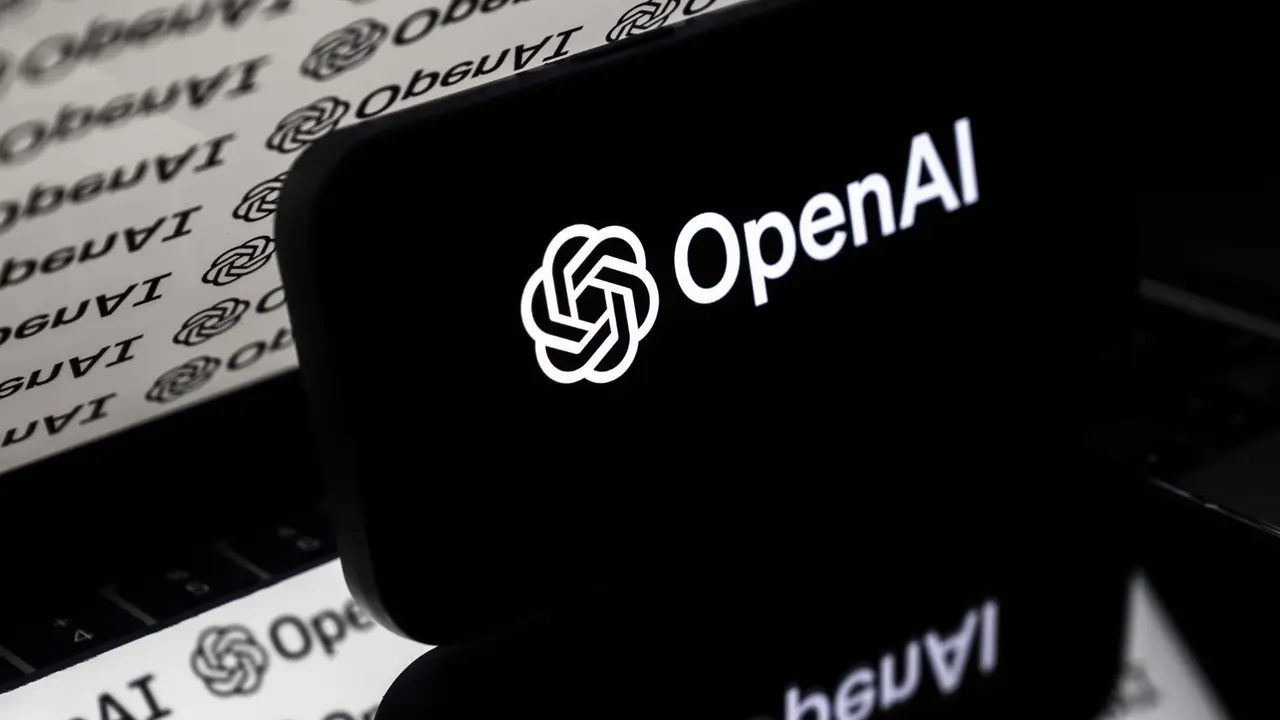BrickGPT: AI-Powered Tool Revolutionizes Manufacturing with Lego-Inspired Approach
2 Sources
2 Sources
[1]
The AI Tool That Could Make Manufacturing Faster and More Efficient -- by Using Lego Bricks
A new AI-powered tool created by researchers at Carnegie Mellon University's School of Computer Science(opens in new window) could change the way we manufacture and build things. BrickGPT(opens in new window) uses text prompts to help people -- and even robots -- bring ideas to life with Lego bricks. It takes a simple word, such as "guitar," and creates a brick-by-brick guide for a person or a robot to build a physically stable model of that object. The tool is currently focused on building with Lego bricks, but turning a text prompt into something physically stable goes beyond play. "This research paves the way toward generative manufacturing, which is when people can use a generative model to design everyday objects they can build themselves," said Jun-Yan Zhu(opens in new window), the Michael B. Donohue Assistant Professor of Computer Science and Robotics in CMU's Robotics Institute(opens in new window) (RI). "They can build a chair, a sofa or a kids' toy. This is a new frontier, a new usage of these models beyond creating social media videos or photos. These brick toy pieces are a simple medium, and it's a starting point." Researchers said this fusion of AI and robotics could speed up the process of designing and building new things. "This could be a huge benefit to the manufacturing world," said Changliu Liu(opens in new window), an associate professor in the RI. "It takes a long time to turn ideas into a physical design and prototype. But if you can integrate generative AI into the process, it can significantly improve efficiency and reduce the roadblocks to kicking off projects." Currently, the BrickGPT demo can produce step-by-step guides for humans or robots to build 21 types of models out of Lego bricks, including a birdhouse, sofa and piano. If someone wanted to generate a sofa, they would type "sofa" into BrickGPT, which generates a 3D model. Then, an algorithm transforms the 3D model into brick structures and BrickGPT checks to ensure the structure is stable. A person or robotic arm can follow the steps and build the sofa. To train BrickGPT, researchers generated StableText2Brick, a dataset containing over 47,000 brick structures made from more than 28,000 unique 3D objects accompanied by detailed captions. Researchers took an existing dataset of 3D shapes, ShapeNetCore, and converted these shapes into a grid of small cubes, a process the study describes as voxelizing. They then trained an autoregressive large language model (LLM), which predicts future values based on previous ones. For example, in BrickGPT, the LLM predicts the next brick based on the previous one, ensuring that the structure is stable and won't fall over. If there's an error along the way, BrickGPT goes back and eliminates unstable points to guarantee the structure's stability. "If a structure is unstable, there's a rollback process," said Pun. "During that step, the model determines which bricks were wrong or unstable and we roll back to the point before that. We detect instability with our physics reasoning algorithm, which generates a stability score for each brick in the structure. If the score is high enough, that means that brick was stable." Researchers hope to scale up this model, enabling it to generate more than the current 21 objects. They also hope to expand the diversity of their library pieces to increase the accuracy and complexity of generated designs.
[2]
The AI tool that could make manufacturing faster and more efficient -- by using Lego bricks
A new AI-powered tool created by researchers at Carnegie Mellon University's School of Computer Science could change the way we manufacture and build things. BrickGPT uses text prompts to help people -- and even robots -- bring ideas to life with Lego bricks. It takes a simple word, such as "guitar," and creates a brick-by-brick guide for a person or a robot to build a physically stable model of that object. The tool is currently focused on building with Lego bricks, but turning a text prompt into something physically stable goes beyond play. "This research paves the way toward generative manufacturing, which is when people can use a generative model to design everyday objects they can build themselves," said Jun-Yan Zhu, the Michael B. Donohue Assistant Professor of Computer Science and Robotics in CMU's Robotics Institute (RI). "They can build a chair, a sofa or a kids' toy. This is a new frontier, a new usage of these models beyond creating social media videos or photos. These brick toy pieces are a simple medium, and it's a starting point." Researchers said this fusion of AI and robotics could speed up the process of designing and building new things. "This could be a huge benefit to the manufacturing world," said Changliu Liu, an associate professor at the RI. "It takes a long time to turn ideas into a physical design and prototype. But if you can integrate generative AI into the process, it can significantly improve efficiency and reduce the roadblocks to kicking off projects." Currently, the BrickGPT demo can produce step-by-step guides for humans or robots to build 21 types of models out of Lego bricks, including a birdhouse, sofa and piano. If someone wanted to generate a sofa, they would type "sofa" into BrickGPT, which generates a 3D model. Then, an algorithm transforms the 3D model into brick structures and BrickGPT checks to ensure the structure is stable. A person or robotic arm can follow the steps and build the sofa. To train BrickGPT, researchers generated StableText2Brick, a dataset containing more than 47,000 brick structures made from more than 28,000 unique 3D objects accompanied by detailed captions. Researchers took an existing dataset of 3D shapes, ShapeNetCore, and converted these shapes into a grid of small cubes, a process the study describes as voxelizing. They then trained an autoregressive large language model (LLM), which predicts future values based on previous ones. For example, in BrickGPT, the LLM predicts the next brick based on the previous one, ensuring that the structure is stable and won't fall over. If there's an error along the way, BrickGPT goes back and eliminates unstable points to guarantee the structure's stability. Along with Liu and Zhu, the SCS research team includes Ava Pun, a doctoral student in the Computer Science Department; Kangle Deng and Ruixuan Liu, doctoral students in the RI; and Deva Ramanan, a professor in the RI. "If a structure is unstable, there's a rollback process," said Pun. "During that step, the model determines which bricks were wrong or unstable and we roll back to the point before that. We detect instability with our physics reasoning algorithm, which generates a stability score for each brick in the structure. If the score is high enough, that means that brick was stable." Researchers hope to scale up this model, enabling it to generate more than the current 21 objects. They also hope to expand the diversity of their library pieces to increase the accuracy and complexity of generated designs.
Share
Share
Copy Link
Carnegie Mellon University researchers develop BrickGPT, an AI tool that transforms text prompts into stable 3D models using Lego bricks, potentially revolutionizing manufacturing processes.
Innovative AI Tool Bridges Text and Physical Design
Researchers at Carnegie Mellon University's School of Computer Science have developed BrickGPT, an AI-powered tool that could revolutionize the manufacturing industry. This innovative system transforms simple text prompts into detailed, physically stable 3D models using Lego bricks as its medium
1
2
.How BrickGPT Works
BrickGPT takes a text input, such as "guitar," and generates a comprehensive, brick-by-brick guide for constructing a stable model of the object. The process involves several key steps:
- Text-to-3D Model Conversion: The AI generates a 3D model based on the text prompt.
- Brick Structure Transformation: An algorithm converts the 3D model into a structure made of Lego bricks.
- Stability Check: BrickGPT ensures the structural integrity of the design.
- Guide Generation: The system produces step-by-step instructions for humans or robots to follow.
Currently, BrickGPT can create guides for 21 different types of models, including birdhouses, sofas, and pianos
1
2
.Training and Technical Details
The development of BrickGPT involved creating a substantial dataset called StableText2Brick, containing over 47,000 brick structures derived from more than 28,000 unique 3D objects with detailed captions. The researchers utilized the ShapeNetCore dataset, converting 3D shapes into voxels (a grid of small cubes)
1
2
.An autoregressive large language model (LLM) was trained to predict the placement of each subsequent brick based on the previous ones, ensuring structural stability. If instabilities are detected, a rollback process is initiated to correct the design
1
2
.Related Stories
Implications for Manufacturing and Design

Source: CMU
Jun-Yan Zhu, Assistant Professor at CMU's Robotics Institute, emphasizes the potential of this technology: "This research paves the way toward generative manufacturing, which is when people can use a generative model to design everyday objects they can build themselves"
1
2
.The fusion of AI and robotics in BrickGPT could significantly accelerate the design and prototyping process. Changliu Liu, an associate professor at the Robotics Institute, notes, "It takes a long time to turn ideas into a physical design and prototype. But if you can integrate generative AI into the process, it can significantly improve efficiency and reduce the roadblocks to kicking off projects"
1
2
.Future Developments
The research team, which includes doctoral students Ava Pun, Kangle Deng, and Ruixuan Liu, along with Professor Deva Ramanan, has ambitious plans for BrickGPT's future
2
. They aim to:- Scale up the model to generate more than the current 21 object types.
- Expand the diversity of library pieces to increase design accuracy and complexity.
While BrickGPT currently focuses on Lego bricks, the underlying technology has broader implications for transforming text prompts into physically stable designs across various manufacturing applications
1
2
.This groundbreaking research represents a significant step towards bridging the gap between AI-generated designs and real-world manufacturing, potentially revolutionizing how we conceptualize, prototype, and produce physical objects in the future.
References
Summarized by
Navi
Related Stories
Recent Highlights
1
AI Chatbots Sway Voters More Effectively Than Traditional Political Ads, New Studies Reveal
Science and Research

2
Trump signs executive order to override state AI laws despite bipartisan pushback
Policy and Regulation

3
OpenAI warns upcoming AI models will likely pose high cybersecurity risk with zero-day exploits
Technology








